Top speed 139 km/h Length 2.9 m First flight January 28, 2009 | Wingspan 5.3 m Manufacturer Arcturus-UAV, LLC | |
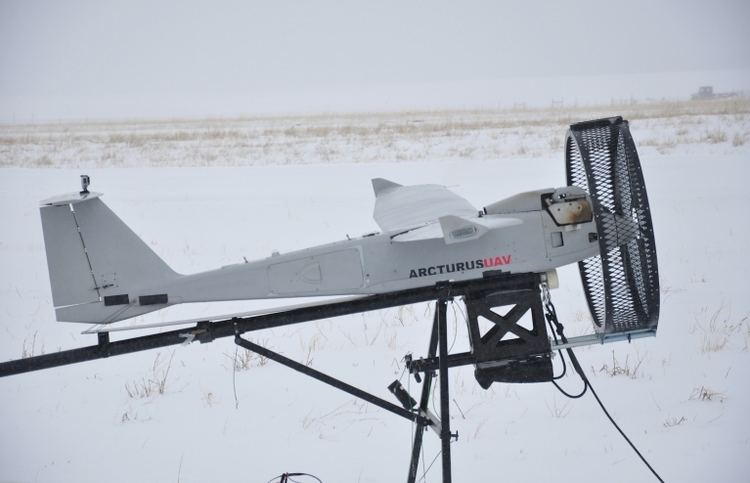 | ||
Arcturus t 20 launch
The Arcturus T-20 unmanned aerial vehicle (UAV) is a medium range, fully composite aircraft capable of internal and external payloads. Launched from a portable catapult, it can be recovered with a shipboard landing system, or belly land on unimproved surfaces. The T-20 carries a retractable gimbal-mounted, digitally stabilized, electro-optical/infrared (EO/IR) camera that relays video in real time via a C-band LOS data link to the ground control station (GCS). Powered by a 4-stroke, fuel injected gasoline engine, the aircraft burns 2 lbs of fuel per hour at cruise. The T-20 does not require an airfield to operate and lands on dirt, grass, desert, or gravel roads. The internal payload bay (11"x11"x36") allows for sensor arrays to be pre-assembled on 'payload pallets' that attach from the bottom of the aircraft. The T-20 system includes three aircraft, ground control station, portable launcher, and support trailer for equipment and personnel. The airframe is entirely composite with complex wet wings tested to stresses of 10 G's.
Contents
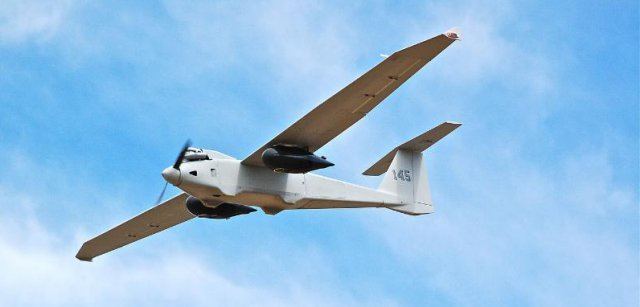
Arcturus t 20 landing 3gp
Development
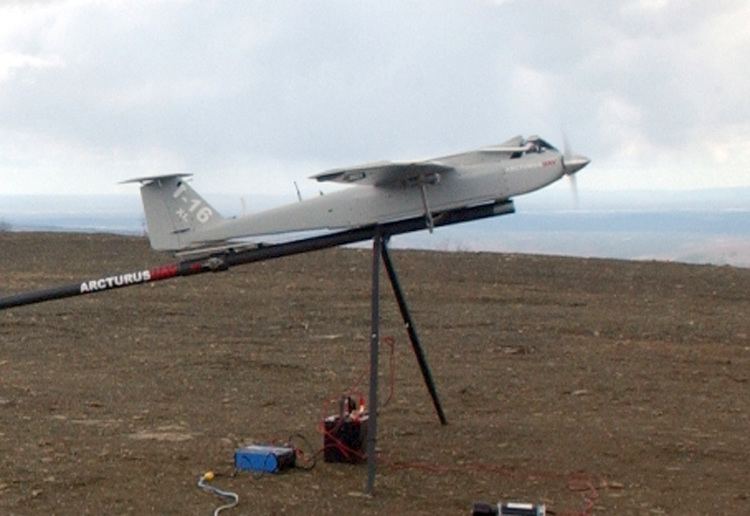
The Arcturus-UAV T-20 was privately developed in 2009 in Rohnert Park, California as an Intelligence, Surveillance and Reconnaissance platform with payload capacity for a gimbal camera, and wing mounted drop pods. Flight testing of the prototype T-20 was completed at Edwards Air Force Base in February 2009. The first air drop test was completed in August 2009 at Camp Roberts California with payloads provided by the Naval Postgraduate School. October 2009 The T-20 flew air drops at the 2009 Precision Airdrop Technology Conference and Demonstration(PATCAD) at Yuma Proving Ground in support of the Naval Postgraduate School Snowflake guided para foil.
Operation
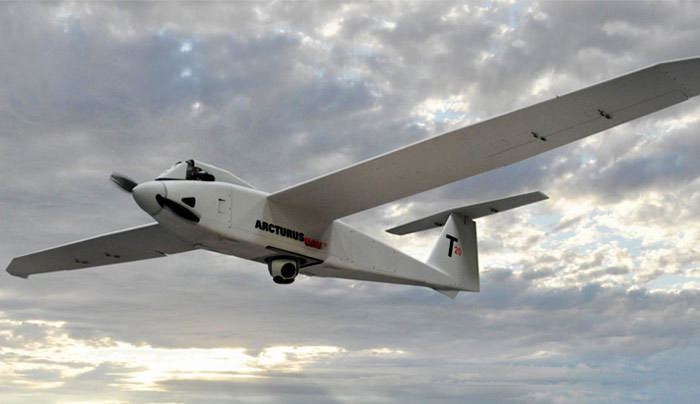
In March 2012, the Naval Air Systems Command (NAVAIR) included the Arcturus T-20 UAV in multi-award IDIQ contract N00019-12-D-0010 for ISR Services. Arcturus UAV, LLC is a subcontractor to Computer Sciences Corporation (CSC) under this contract.

In California on October 24, 2012, the Arcturus T-20 made aviation history as the first unmanned aerial vehicle to detect and avoid a general aviation manned aircraft using an ADS-B transponder. The event was sponsored by the Cascade Chapter of AUVSI.
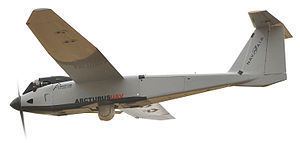
In August 2013, the T-20 flew to an altitude of 23,500 feet (7,200 m) with no special modifications. The previous altitude record for the T-20 was 15,000 feet (4,600 m) The aircraft flew for eight hours before landing.
The T-20 and T-20 JUMP are deployed extensively with the Mexican Navy. The T-20 is also deployed with the Turkish government.
Variants
Variations of the T-20 are the Block I (Carburetor) and Block II (Fuel Injected).
Specifications
Data from Arcturus UAV T-20
General characteristics
Performance
